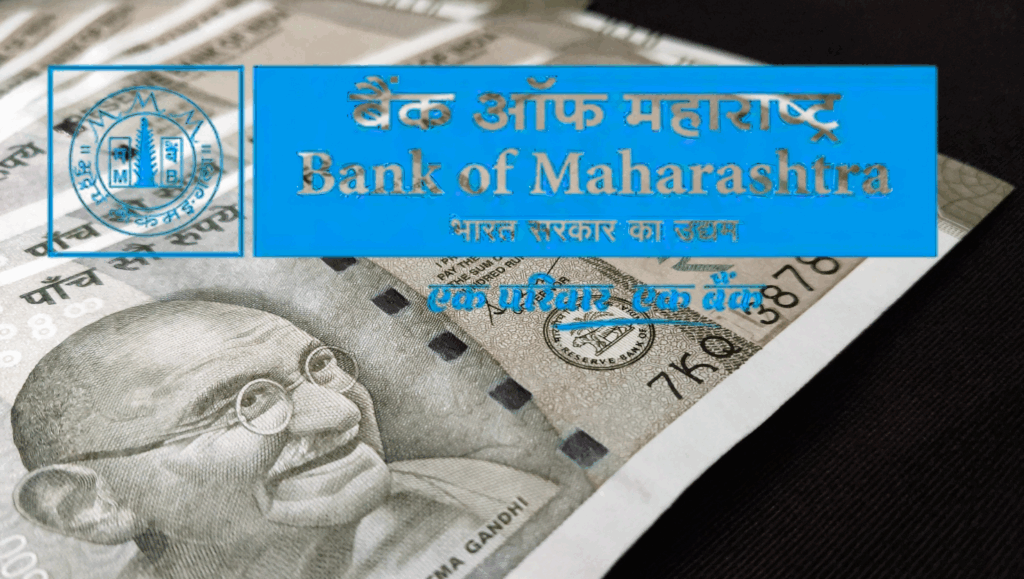
Looking for the best gold investment options in India after SGB discontinuation? Explore sovereign gold bonds (existing), gold ETFs, digital gold, mutual funds, and physical gold. Compare risks, returns, and liquidity to make an informed choice. Ideal for secure, long-term investors.
Gold has long been a cornerstone of wealth preservation in India, cherished for its cultural significance and financial stability. With the recent speculation surrounding the discontinuation of the Sovereign Gold Bond (SGB) scheme, as announced in the Budget 2025, investors are seeking viable alternatives to invest in gold. The SGB scheme, launched in 2015 by the Government of India, offered a secure, government-backed option for investing in gold digitally, with a fixed 2.5% annual interest rate and tax exemptions on capital gains at maturity. However, rising gold prices and a financial burden of approximately ₹38,700 crore have prompted the government to halt new SGB issuances, leaving investors to explore other gold investment options. This blog post delves into the best alternatives for investing in gold in India, incorporating the latest data, pros, cons, and insights to guide your investment decisions.
Why Invest in Gold?
Gold is a safe-haven asset, prized for its ability to hedge against inflation, currency devaluation, and economic uncertainties. In 2025, gold prices in India hit an all-time high of ₹84,900 per 10 grams, driven by global uncertainties and safe-haven demand. With the discontinuation of SGBs, understanding alternative investment avenues is crucial for portfolio diversification and capital appreciation. The key considerations for choosing a gold investment include safety, liquidity, returns, tax efficiency, and ease of storage.
The Discontinuation of Sovereign Gold Bonds (SGBs)
The Sovereign Gold Bond scheme was introduced to reduce India’s dependency on physical gold imports and promote paper gold investments. Issued by the Reserve Bank of India (RBI) on behalf of the Government of India, SGBs offered investors the market value of gold at redemption, a 2.5% annual interest rate, and tax-free capital gains upon maturity after eight years. However, the scheme’s financial burden, including a ₹32,000 crore loss due to gold price appreciation and ₹3,200 crore in tax waivers, has led to its likely discontinuation starting FY25-26. No new tranches have been issued in FY24-25, and the RBI has even announced early redemption for bonds issued between 2017 and 2020 to mitigate costs. Investors can still purchase existing SGBs in the secondary market (e.g., BSE or NSE), but these often trade at a premium, such as 12% for the February 2024 tranche, reducing their cost-effectiveness.
Best Alternatives to Invest in Gold in 2025
With SGBs no longer a primary option, here are the top alternatives for investing in gold in India, each evaluated for returns, safety, liquidity, and tax implications.
1. Gold Exchange-Traded Funds (ETFs)
Gold ETFs are mutual funds that invest in physical gold of 99.5% purity, with each unit representing one gram of gold. They are traded on stock exchanges like NSE and BSE, offering high liquidity and transparency.
Pros:
- Liquidity: Gold ETFs can be bought and sold instantly during market hours, unlike SGBs, which have a five-year lock-in period for premature redemption.
- No Storage Hassles: As a paper-based investment, ETFs eliminate the risks and costs of storing physical gold, such as locker fees or theft.
- Low Costs: ETFs have lower expense ratios (around 0.5–1%) compared to the making charges (10–20%) for physical gold jewelry. There’s also no GST on ETF purchases, unlike the 3% GST on physical gold.
- Transparency: ETF prices closely track domestic gold prices, ensuring fair value.
Cons:
- No Interest Income: Unlike SGBs, ETFs do not offer fixed interest, relying solely on gold price appreciation for returns.
- Brokerage Fees: Trading ETFs incurs brokerage charges, though these are typically lower than physical gold’s making charges.
- Taxation: Long-term capital gains (held over one year) are taxed at 12.5% with indexation benefits, while short-term gains are taxed at the investor’s income tax slab rate.
Why Choose Gold ETFs?
Gold ETFs are ideal for investors seeking liquidity and ease of trading without the hassle of physical storage. In 2025, with gold prices soaring, ETFs provide a cost-effective way to capitalize on price appreciation. Popular options include Nippon India Gold ETF, HDFC Gold ETF, and SBI Gold ETF, available through platforms like Zerodha, Groww, or HDFC Securities.
2. Gold Mutual Funds
Gold mutual funds invest in gold ETFs, offering a systematic investment plan (SIP) option for disciplined investors. They are managed by professional fund managers, making them suitable for those who prefer a hands-off approach.
Pros:
- SIP Flexibility: Investors can start with as little as ₹100 per month, making gold mutual funds accessible to small investors.
- Diversification: These funds may invest in multiple gold ETFs, reducing risk compared to holding a single ETF.
- No Demat Account Required: Unlike ETFs, gold mutual funds can be purchased directly through mutual fund platforms or banks, simplifying the process.
- Liquidity: Units can be redeemed easily, though redemption may take 1–2 days compared to ETFs’ instant trading.
Cons:
- Expense Ratio: Gold mutual funds charge a slightly higher expense ratio (0.5–1.5%) than ETFs due to management fees.
- No Interest Income: Like ETFs, returns depend solely on gold price movements.
- Taxation: Similar to ETFs, long-term capital gains are taxed at 12.5% with indexation, and short-term gains are taxed at slab rates.
Why Choose Gold Mutual Funds?
Gold mutual funds are perfect for investors who prefer a systematic approach and lack a demat account. They offer a low-entry barrier and professional management, making them a strong alternative to SGBs. Popular funds include ICICI Prudential Regular Gold Savings Fund and Axis Gold Fund, available on platforms like Groww and ETMoney.
3. Digital Gold
Digital gold allows investors to buy and store gold digitally through platforms like Paytm, Google Pay, or PhonePe. It is backed by physical gold stored in secure vaults by providers like MMTC-PAMP or SafeGold.
Pros:
- Low Investment Threshold: Investors can buy as little as ₹1 worth of gold, making it highly accessible.
- Convenience: Digital gold can be purchased online with instant transactions, eliminating the need for physical storage.
- Purity Assurance: Digital gold is typically 99.9% pure, avoiding concerns about jewelry’s purity.
Cons:
- Storage Fees: Some platforms charge annual storage fees, which can erode returns.
- Liquidity Risks: Selling digital gold may involve delays or additional charges compared to ETFs.
- No Interest Income: Like ETFs, digital gold offers no fixed returns, relying on price appreciation.
- Taxation: Long-term capital gains are taxed at 12.5% with indexation, and short-term gains at slab rates. A 3% GST applies on purchases, increasing costs.
Why Choose Digital Gold?
Digital gold suits investors seeking convenience and small-scale investments. However, its higher costs (GST and storage fees) and lack of government backing make it less attractive than ETFs or mutual funds for long-term investors.
4. Physical Gold (Jewelry, Coins, Bars)
Physical gold in the form of jewelry, coins, or bars remains a traditional investment choice in India, available through jewelers, banks, or e-commerce platforms like Amazon and Flipkart.
Pros:
- Tangible Asset: Physical gold provides psychological comfort and can be used as jewelry or gifted during cultural events.
- High Liquidity: Gold coins and bars can be sold easily at jewelry stores or banks, though at a slight discount (2–5% for coins, 10% for jewelry).
- Hedge Against Inflation: Physical gold retains value during economic downturns.
Cons:
- High Costs: Making charges for jewelry (10–20%) and GST (3%) significantly increase costs compared to paper gold.
- Storage Risks: Storing gold at home poses theft risks, while bank lockers incur annual fees.
- Purity Concerns: Jewelry may not always be 24-karat, affecting resale value.
- Taxation: Long-term capital gains are taxed at 12.5% with indexation, and short-term gains at slab rates.
Why Choose Physical Gold?
Physical gold is ideal for those who value tangible assets or need gold for personal use. However, its high costs and storage challenges make it less efficient than digital alternatives for pure investment purposes.
5. Gold Futures and Options
Gold futures and options are derivatives traded on the Multi Commodity Exchange (MCX), allowing investors to speculate on gold prices without owning the asset.
Pros:
- High Leverage: Futures allow investors to control large positions with small capital, amplifying potential returns.
- Liquidity: The MCX offers high trading volumes, ensuring ease of entry and exit.
- Hedging: Futures can protect against price volatility for those with physical gold holdings.
Cons:
- High Risk: Leverage can lead to significant losses, making futures suitable only for experienced investors.
- No Physical Ownership: Investors do not hold gold, missing out on cultural or tangible benefits.
- Taxation: Gains are treated as business income, taxed at slab rates, with no indexation benefits.
Why Choose Gold Futures?
Gold futures are best for seasoned investors with high-risk tolerance and market knowledge. They are not recommended for retail investors seeking safe, long-term gold investments.
Comparative Analysis of Gold Investment Options
| Option | Returns | Liquidity | Safety | Taxation | Storage |
| Gold ETFs | Gold price appreciation | High | High (exchange-backed) | LTCG: 12.5% with indexation | No storage needed |
| Gold Mutual Funds | Gold price appreciation | Moderate | High (fund-backed) | LTCG: 12.5% with indexation | No storage needed |
| Digital Gold | Gold price appreciation | Moderate | Moderate (platform risk) | LTCG: 12.5% with indexation, 3% GST | No storage needed |
| Physical Gold | Gold price appreciation | High | Moderate (theft risk) | LTCG: 12.5% with indexation, 3% GST | Requires storage |
| Gold Futures | Speculative returns | High | Low (high risk) | Business income, slab rates | No storage needed |
Which Is the Best Gold Investment Option ?
The best gold investment option depends on your financial goals, risk appetite, and investment horizon:
- For Safety and Liquidity: Gold ETFs are the top choice due to their low costs, high liquidity, and government-regulated structure. They closely track gold prices and require no storage, making them a direct substitute for SGBs.
- For Small Investors: Gold mutual funds offer flexibility through SIPs and are ideal for those without a demat account or seeking professional management.
- For Convenience: Digital gold is suitable for small, frequent investments but is less cost-effective due to GST and storage fees.
- For Traditional Investors: Physical gold suits those who value tangible assets, though it comes with higher costs and storage challenges.
- For High-Risk Investors: Gold futures are best for experienced traders comfortable with leverage and volatility.
Tax Considerations
- Gold ETFs and Mutual Funds: Long-term capital gains (held over one year) are taxed at 12.5% with indexation, while short-term gains are taxed at slab rates.
- Digital and Physical Gold: Subject to 3% GST on purchase, with similar capital gains taxation as ETFs.
- SGBs (Secondary Market): Capital gains on maturity are tax-free, but interest is taxable at slab rates. Secondary market purchases may not offer the same tax benefits if sold before maturity.
- Gold Futures: Gains are taxed as business income, often at higher rates.
How to Invest in Gold
- Gold ETFs: Open a demat account with platforms like Zerodha, Upstox, or HDFC Securities. Search for gold ETFs (e.g., Nippon India Gold ETF) and place buy orders during market hours.
- Gold Mutual Funds: Invest through mutual fund platforms like Groww, ETMoney, or directly via AMCs like ICICI Prudential or SBI Mutual Fund. Start an SIP or lump-sum investment.
- Digital Gold: Purchase through apps like Paytm, PhonePe, or MMTC-PAMP’s website. Ensure the platform partners with reputed vault providers.
- Physical Gold: Buy from trusted jewelers, banks, or e-commerce platforms. Verify purity (24-karat for coins/bars) and store securely in bank lockers.
- Gold Futures: Open a trading account with an MCX-registered broker like Angel One or Sharekhan. Understand margin requirements and market risks before trading.
Final Thought
The discontinuation of the Sovereign Gold Bond scheme marks a shift in India’s gold investment landscape, but alternatives like gold ETFs, gold mutual funds, digital gold, physical gold, and gold futures offer diverse options to suit different investor needs. For most retail investors, gold ETFs and gold mutual funds stand out as the best replacements for SGBs due to their safety, liquidity, and cost-effectiveness. Digital gold offers convenience for small investments, while physical gold remains a cultural favourite despite its drawbacks. High-risk investors may explore gold futures, but caution is advised.
Before investing, assess your financial goals, risk tolerance, and tax implications. With gold prices at record highs in 2025, diversifying your portfolio with gold remains a prudent strategy. Stay informed through platforms like NSE, BSE, or trusted financial advisors, and choose the option that aligns with your investment horizon.

















































